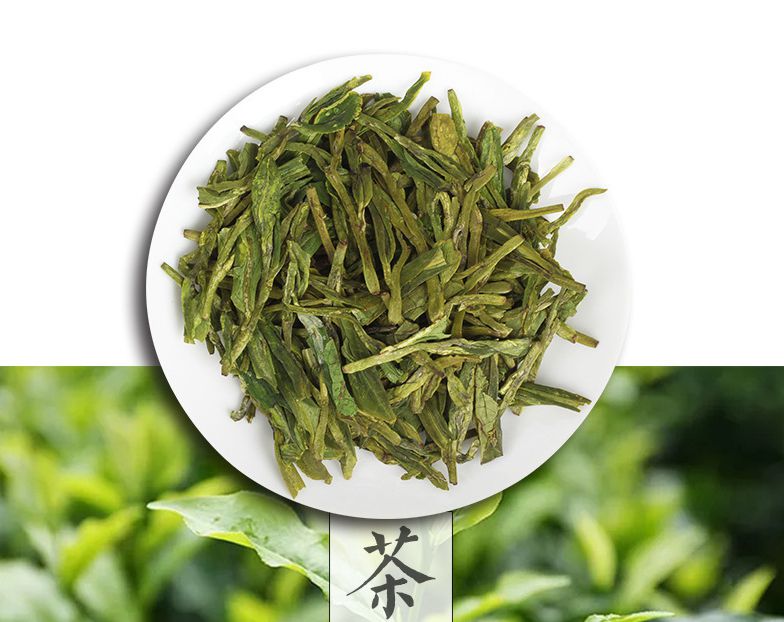Green Tea
Green tea is a non-fermented tea, which is well-known for its freshness. It is suitable for chilling at low temperature. For the unsealed green tea, it should be kept in an airtight container and preferably be used within two months. Here are five points for keeping green tea.

- Avoid moisture: Green tea is a loose and porous hydrophilic material, so it has a strong hygroscopicity. When storing green tea, a relative humidity of 60% is more suitable. If the humidity exceeds 70%, the tea will generate mildew spots due to moisture absorption, and will be acidified and deteriorated.
- Avoid high temperature: The best storage temperature for green tea is 0-5 ℃. If the temperature is too high, the amino acids, sugars, vitamins and aromatic substances in the tea will be decomposed and destroyed, which reduces the quality, aroma and taste.
- Avoid sunlight: Sunlight will promote the oxidation of pigments and esters in green tea, decompose chlorophyll into pheophytin. It’s better not to store green tea in glass containers or transparent plastic bags, since the teas’ internal substances will change chemically after being exposed to sunlight.
- Avoid oxygen: Chlorophyll, aldehydes, esters, vitamin C, etc. in green tea leaves are easy to combine with oxygen in the air. The oxidized green tea leaves will make the soup color red and dark, which greatly reduces the nutritional value.
- Avoid odor: Green tea leaves contain high-molecular palmase and terpene compounds, which are extremely unstable and can absorb odors widely. Therefore, when green tea leaves are mixed with odorous items, they will absorb the odor and cannot be removed.
In a word, green tea is better to be preserved in food packaging bags with high density and no peculiar smell, and then placed in the freezer or refrigerator. This method has a long storage time and good effect, but the bag must be tightly sealed, otherwise the tea will absorb moisture or odors, and the quality will be damaged.
White tea
White tea belongs to micro-fermented tea and is a special treasure in Chinese tea. It is a kind of tea that is processed without drying or twisting after being picked, and only dried after sunning or simmering. Therefore, it has strong adsorption, and should be protected sealed from light and odor. White tea should not be placed under the environment of high temperature, strong light and odor. The best environment of storing white tea should be properly ventilated, dry, room temperature and no odor. It is not necessarily be refrigerated.

- Canister storage: white tea can be kept in a tea canister to prevent crushing. The material of tea canister can either be tin, iron, ceramic, or stainless steel, but all canisters should have good airtightness.
- Charcoal storage: Take an appropriate amount of charcoal into a small cloth bag, put it into the bottom of the tea canister, arrange the packed tea leaves in layers in the canister, and seal the mouth. The charcoal should be changed once a month.
- Refrigerated storage: Seal the tea leaves in bags or tea canisters, and store them in the refrigerator at a temperature of preferably 5 °.
For the white tea, there is an old saying “one year of tea, three years of medicine, ten years of treasure”, indicating that white tea can be stored for at least 10 years.
Yellow tea
Yellow tea is a lightly fermented tea, and its processing technology is similar to that of green tea. It only adds a “sweltering” process to promote partial oxidation of its polyphenol chlorophyll and other substances. The quality of yellow tea is not much different from that of green tea, so yellow tea is suitable for cold storage, and can be referred to the way of storing green tea.
Oolong tea
Oolong tea, semi-fermented tea, is a tea species with distinctive characteristics including North Fujian Oolong, South Fujian Oolong, Guangdong Oolong and Taiwan Oolong. Because its taste is famous for freshness and mellowness, it is recommended to keep it at low temperature.
- At home, store oolong tea in a dry, dark, sealed, non-ventilated, and non-odorous place.
- Many oolong teas are already packaged, either in plastic bags, aluminum foil bags, or vacuum bags. Plastic bags are not suitable for long-term storage, it is best to drink as soon as possible.
- Do not put oolong tea in the kitchen or in cabinets with soap, moth balls, or condiments to avoid absorbing odors.
If the oolong tea leaves become wet during the storage process, you can find a clean, non-greasy pot, put a bamboo sieve on the top to slowly dry them. But if there is mildew, you can’t drink the tea anymore.

Black tea
During the processing of black tea, a chemical reaction centered on the enzymatic oxidation of tea polyphenols takes place. The chemical composition in the fresh tea leaves changes greatly, where tea polyphenols reduce by more than 90%, and new ingredients such as flavin and thearubin arise. So black tea has the characteristics of black tea, red soup and red leaves, tasting sweet and mellow. Black tea is fully fermented and doesn’t need refrigeration.
- Black tea’s water content is not high, so it is very absorbent and volatile, thus should be stored separately with other teas.
- It is better to ensure that the black tea leaves can be kept in an environment with constant temperature. If the temperature difference is too large, the black tea will deteriorate easily.
- Keep the black tea in a dry, dark, cool place, and keep the tea canister well sealed.
Usually, if preserved well, black tea can be stored for almost 3 years. But the best taste is guaranteed within one year.

Post-fermented tea
Post-fermented tea, or dark tea, needs further aging to enhance its value and quality. Therefore, post-fermented tea is better to store at room temperature, and not recommended to be refrigerated at low temperature. A good environment where it is clean, dry, ventilated, moisture-proof, and odor-free is helpful for the storage of post-fermented tea.
- Store in tea canisters: this is the most commonly used method in the family. Canisters of iron, tin, ceramic, or stainless steel can be selected. After putting tea inside, tea canisters should avoid direct sunlight, smelly, humid, or heat sources.
- Store in a cool place. Sun exposure is forbidden, otherwise post-fermented tea will quickly oxidize and produce some unpleasant chemical components, affecting the taste.
- Moderate ventilation is needed. This is because ventilation contributes to the natural oxidation of post-fermented tea, properly absorbing moisture in the air, and accelerating the metabolism of microorganisms.
One thing to be noted is that sealed plastic bags are forbidden to use for the storage of post-fermented tea, since there is no ventilation in plastics. It is better to use brown paper, cotton paper and other breathable packaging materials.

Post-fermented Tea-Pu’er Tea Cake

